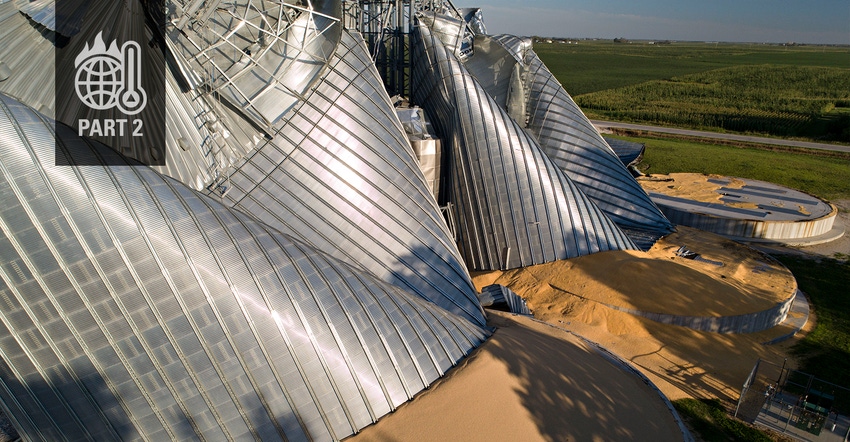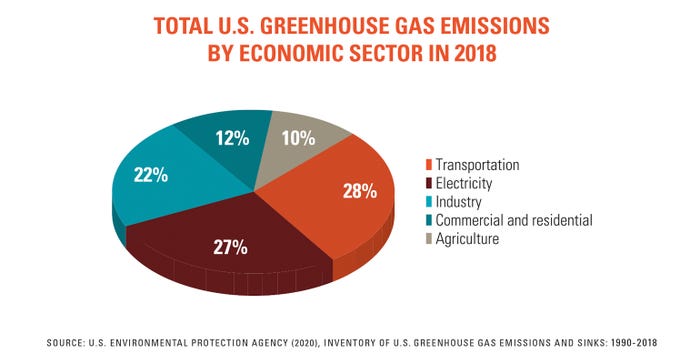
There’s a steady drumbeat of news and noise surrounding greenhouse gas (GHG), climate change and global warming. But what’s noise and what’s real?
In part one I told you about a plan to have farmers get paid for climate-smart farm practices. That is not a reality yet – but it looks promising.
Whether carbon trading markets or retailer-driven supply chain incentives ever happen is a question -- but weather extremes are not. They are a reality for you and me, and it will worsen for our kids and the planet if we don’t reverse course.
It’s a complex problem made more difficult because some groups offer junk science to defend questionable positions. So before you start on this journey, our first bit of advice: learn to vet the sources you read and watch out for ‘confirmation bias.’ That happens when you search out and favor information that only confirms your beliefs and values. That does not promote learning. And that’s why you’ll see a ton of links in this story.
My only bias in this series is that it comes from the viewpoint of the farmer. I grew up on a farm and I’ve written for and about farmers for 40 years (yeah, I’m old).
What you’re about to read won’t always align with your beliefs. You may scoff at information sources that are not ‘farm-centric.’ If you’re only interested in reading something you agree with, move along.
What’s happening to weather?
We’ve added a lot of new words to our vocabulary in the past five years: 100-year floods, 100-year droughts, warmest winter ever, polar vortex, bomb cyclones -- and now Derecho!
Extreme weather is a growing problem – literally. Farmers have always dodged weather but it’s getting tougher all the time. Innovation can help, but there’s rising evidence that technology alone cannot fix this problem, according to this 2018 National Climate Assessment, written by a science panel representing 13 federal agencies.
Even so, weather’s impact on your daily life is hard to pin down.
“When you have a 2 to 3 degree temperature change over the course of a year, it’s hard to make that resonate,” says Eric Snodgrass, Nutrien atmospheric scientist and former director of undergrad studies for the department of atmospheric sciences at University of Illinois.
We need a real understanding of the tradeoffs between food production and GHG emissions, then, lay out a path toward a more climate-friendly future.
Just the facts
At just under 10%, EPA ranks agriculture fifth in GHG emissions after transportation, electricity, industry, and commercial/residential use. That figure does not consider carbon sinks (things that absorb carbon dioxide). Carbon sinks include forest management to increase carbon in forests, increases in tree carbon stocks in settlements, agricultural-to-forest conversion, and crop management practices like cover crops that stash carbon in soils.
Forestry often gets lumped in with agriculture so it’s best to understand how this works, especially with the devastating west coast wildfires. Forests store carbon in their mass and when fires come along, all that carbon is released. Some studies show grasslands may be better in some areas where fires are common, like California.
Globally, the World Resources Institute says agriculture emits 25% of GHG when you combine food production with practices like land clearing (deforestation) and plowing. WRI claims U.S. beef consumption causes deforestation in the Amazon. The organization bases its claims on Princeton researcher Tim Searchinger’s work.
But that 25% has been called into question by several noted climate experts including University of California-Davis professor and air quality specialist Frank Mitloehner.
“Ultimately, a U.S. consumer eating less meat has not and will not displace consumption of Brazilian beef in Iran or China and therefore, decrease land expansion into the Amazon,” writes Mitloehner in a 2019 blog. “That’s not how global beef markets work.”
But, what about deforestation?
It’s a big one. We can’t control what’s happening in the Amazon rainforest, where Brazilian cattle ranchers allegedly burn down trees to make rangeland. Brazil has laws on the books to protect the forest but in the past year these laws have not been enforced.
It’s possible many of us in rich countries overconsume animal protein. On the other hand, 10% of the world lives on $2 a day. That’s 700 million souls, mainly in Africa and Asia. When they are able to make more money, they upgrade diets to add animal protein.
Imagine telling them they should stick with vegetarian.

Changes from farm to fork
Pushing back against weather extremes and greenhouse gas accumulation will require changes in the way farmers farm. There’s a host of things we can do to sequester carbon and some of them, like no-till and cover crops, are gaining traction.
But, let’s face it: it’s hard to make improvements that feel intangible, especially if you think these changes will ding your pocketbook. “Sustainability for farmers is nothing without the profit aspect,” says Iowa farmer and NCGA president Kevin Ross.
The rest of the ag supply chain needs to get on board, too. Ag lenders, for example, need to become more proactive on the climate. They need to find value in climate resilience. A new report from the Environmental Defense Fund spells out a path forward for lenders.
So far we’ve just touched the surface of this issue, but you can see already – there are no easy answers.
Coming in part three: Synthetic fertilizer is a modern miracle but it’s wrecking the atmosphere. Can we do better
Missed some content in this series?
Part one: Will farmers get paid to save the planet?
Part two: What’s at stake in the debate over climate change
Part three: Synthetic fertilizer is a modern miracle but it’s wrecking the atmosphere. Can we do better?
Part four: Is carbon trading an answer?
Part five: Are burping cows really a threat to humanity
Part six: Farmers, tell your story
Read more about:
ClimateAbout the Author(s)
You May Also Like






